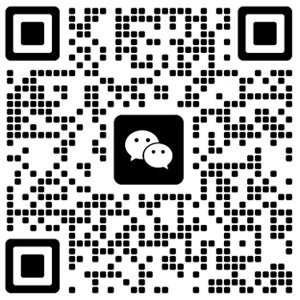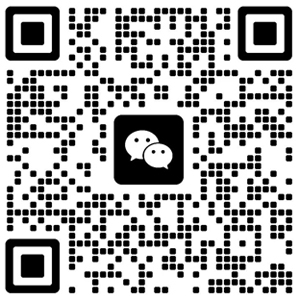
上海自考英语阅读一教材_上海自考本科英语
- 自考信息
- 2024-11-19 19:45:47
谢谢大家对上海自考英语阅读一教材问题集合的提问。作为一个对此领域感兴趣的人,我期待着和大家分享我的见解和解答各个问题,希望能对大家有所帮助。
文章目录列表:
1.上海本科英语自考听力教材?2.自考英语专科用什么教材,上海外国语大学自考英语专科科目?
3.自考本科英语教材内容?
4.上海自考英语本科有听力吗?
5.自考英语本科有教材吗,自考英语本科相当于什么水平?
6.请问2023年上海自考学位英语考试时间(上半年)?

上海本科英语自考听力教材?
今天教务老师给大家收集整理了上海本科英语自考听力教材的相关问题解答,还有免费的自考历年真题及自考复习重点资料下载哦,以下是全国我们为自考生们整理的一些回答,希望对你考试有帮助!
大学英语专业本科的教材有哪些?每个地区的大学都不一样。
现在使用较广的基本都是外教社、高教社的教材,还有学校的课程使用的是自编教材。
外教社的教材如下:
1,综合教程主编是何兆熊,1-4册是基础英语,5-8册是高级英语。
2,听力教程共4册,施心远主编;泛读教程共四册,王守仁主编。
3,高教社的《综合英语教程》、《英语听力教程》、《英语语音教程》使用度也很高。
4,有的学校使用的是李观仪主编的《新编英语教程》做精读课本。但内容太古老,1985年出版后就修订过一次。
扩展资料:
大学本科的英语专业,各个学校的设置不尽相同。
专业必修课有:综合英语ⅠⅡⅢⅣ、英语听力ⅠⅡ英语口语ⅠⅡⅢⅣ、英语语音ⅠⅡ、英语写作ⅠⅡⅢⅣ、英语翻译ⅠⅡ、英语口译ⅠⅡ、经典阅读、专业实习、毕业论文、第二外语:日语、法语、德语。
专业选修课:英美文学史、英语文学选读ⅠⅡ、文学批评导论、女性主义文学批评、语言学导论、应用语言学、功能语言学、语言与社会、英语语义学、英语文体学、语篇分析、语言学专题ⅠⅡ、批评语言学、翻译导论、实用翻译、语篇与翻译、专题口译ⅠⅡ。
必修课:综合英语、英语语音与听力、英语作文、翻译理论与实践、英语口译基础、语言学专题、英美文学文化专题。
参考资料
自考/成考有疑问、不知道自考/成考考点内容、不清楚当地自考/成考政策,点击底部咨询官网老师,免费领取复习资料:ic, they hope the weather is going to
be fine and they can sit eating their lunch under the blue
sky.
Almost everyone listens to what the weatherman says. But
he doesn ' t always tell us what we want, and sometimes he
makes a mistake. Still, he is right most of the time.
1.What's the best title for the passage?
A. How to Begin a Talk . B. Story about a Weatherman
C. Weather Report D. About Weather
1.通读全文,了解短文整体框架、大意及作者意向,并抓住主要信息及各段的中
心内容. (如各段有无共同的谈论对象或各段是否有共同的作用等.)认真体会
作者围绕着什么中心写.
2.忠实于原文, 切忌从主观出发,漫无边际地联想.
3.整体把握全文,切忌只凭文中的只言片语断章取义.
4.忌草率行事.选项中常有一个似是而非的答案。这样答案干扰性特别强,容易
迷惑考生。如果在发现一个看似正确答案时就草率定案,往往会掉进设计者设
置的?跋葳濉崩铩?
阅读理解(二)
Computers are very important to modern life. Many people
think that in the future computers will be used in lots of
everyday life. It is thought that we won' t have to go
shopping because we will be able to get most things which
are sold in shops on the Internet. There will be no more
books because we will be able to get all texts(内容) from
computers. The Internet will be used to play games, see
films and buy food. Most telephone calls will be made by
computers,too. Some people are glad about these new ways of
shopping and communicating(交际). Others do not think that
computers will replace(代替) our old ways of life.
Let's look at books, for example. Some people think
that one day we will not read books made of paper. Instead,
we will buy and read books using computers. We will read
texts on small pocket computers. The computers will keep
many different books in them at the same time. We won't
need to turn lots of pages and paper will be saved.
Computerized books will be used more and more.
Is the Internet shopping such a pleasure as going to the
shop? Many people say it is not. It is a pleasure to go
Into shops and look at things you want to buy. It is also
unlikely (不大可能) that many people will want to read large
texts on our computers. Because paper books will perhaps be
more friendly. Maybe computers won't change these two
habits.
1 .The title for this passage is"______".
A. Computers will replace Shops and Books
B. Computers are the Future
C. Computers will Do Everything for Man
D. How Computers Change Our Habits
A. 与原文意思不符,见第一段最后一行.
B. 全文都谈了人们的猜测:未来,电脑将被应用在日常生活的很多领域中, 有人
认为它能改变人们旧有的生活习惯而有人却认为不能.
C.过于绝对,文中没有可靠证据支持.
D.“电脑怎样改变我们的习惯”.
1.“how” 意为“怎样,用何方法”文中并未提到电脑怎样改变我们的习惯.第
1,2段提到的未来用电脑阅读,打电话或购物等只是它在未来将被应用的领域
而不是方法.
2.文中提出有些习惯未必会被改变,见第一段最后一句“Others do not think
that computers will replace our old ways of life.”和第三段最后一
句“Maybe computers won’t change these two habits”.
阅读理解(三)
阅读理解既理解文章的字面意思,也要理解文章的深层含义,包括作者的态
度、意图等。做阅读理解题时,对不同的题型通常需用不同的方法。解答推理题
时需要注意这样两点:
第一:要依据事物的本质,而不是现象进行推断。
第二:要依据作者的思路和文章本身提供的事实,而不是读者自身经验和见解进
行推断。
Every day we see pictures like this on our televisions. We see
Iraqi(伊拉克) children begging for food and water from American
and British soldiers as they move through towns and cities to the
英语自考怎么考
第一个!!! 你仔细看一下,应该对你有所帮助,
00602 口译与听力
南京师范大学编 (高纲号 0694)
一、考试说明
1.高级听力考试
1)高级听力考试为水平考试,考试方式为考生听录音磁带,同时答题目。答卷分试题和答题纸两部分。考试全长约70分种,其中前60分钟为考生听录音答题时间(具体时值以录音实际长度为准)。录音结束后,考生有10分钟额外的时间把答案誊写到答题卡上。
2)考试题型
高级听力考试共有四个部分(Section)。其中前两部分为客观题,形式为单项选择,即A、B、C、D四项中选一项。后两部分为主观题,形式为书面回答。总分值为50分。
3)题型说明
这一部分 简要新闻理解(14分)
这部分由7段简要新闻(news in brief)级成。主要为国际主要英语媒体如BBC、VOA、CNN、NPR、MSNBC等的简要新闻报道。每段新闻相应在试题中有两个单项选择题。每段新闻的录音播放两遍,然后考生有30秒时间答题。
第二部分 详细报道理解(10分)
第一部分由两段较长的录音构成。形式不一,一般是国际主要英语媒体的对新闻事件的详细报道(news in detail),也可能是国外广播电视英语节目的节选。每段报道相应在试题中有五个单项选择题。每段报道录音播放两遍,然后考生有一分钟时间答题。
第三部分 详细报道内容摘要(20分)
这一部分由两段较长的录音构成,性质同第二部分相同。针对每一段录音,考试卷面上将给出有关该录音内容的两或三个关键词组,要求考生根据所听内容写出和关键词组相关的信息。录音播放两遍,每一遍后留有一分钟间隙供考生书写答案。
第四部分 听写(6分)
在这一部分考生将听到一篇150-200词的录音。录音的文字印在卷面,上面有六处空白,要求考生把空白处的文字听写出来。每个空的文字量5词左右。录音连续不间断地播放三遍。
2.口译考试
1)口译考试为水平考试。形式考官司面试。从考试的客观公平出发,每位考生必须同时接受至少两位考官司的测评。口译的内容事先录制在磁带上,届时为考生播放,考生做即席口译。
2)考试程序
口译考试分为两部分,汉译英和英译汉。
汉译英部分
汉译英部分分两个阶段进行。
第一阶段是单句口译,总计15分。考生将听到4句话,每句中文30字左右。内容涉及日常生活、外事安排、中国国情、中国文化等。每一句的录音播放之后,考生应在30秒内译出该句。
第二阶段是段落口译,计10分。考生将听到1分钟左右的讲话录音。录音共播放两遍。第一遍不间断从头播到尾,第二遍录音播放时,在每一句播放过后考生有30秒时间口译该句。这一阶段的考试考生可以做笔记。
英译汉部分
英译汉部分分两个阶段进行。
第一阶段是单句口译,总计15分。考生将听到4句话,每句英语30词左右。内容涉及日常生活、外国人在华生活、国际事务等。每一句的录音播放之后,考生应在30秒内译出该句。
第二阶段是段落口译,计10分。考生将听到1分钟左右的讲话录音。录音共播放两遍。第一遍不间断从头播至尾,第二遍录音播放时,在每一句播放过后考生有30秒时间口译该句。这一阶段的考试考生可以做笔记。
3)口译总体要求
全部或绝大部分信息被译出,译法准确得当,重点词汇翻译准确,语音地道,语流顺畅,基本上一次完成,允许有少许自然停顿。
三、学习方法
由于客观条件的限制,加上广大自考生不能像在校重建了样有很多时间投入到外语实践这一情况,学好“高级听力与口译”对他们来说有着相当的难度。高级听力和口译要求学习者有很大的语言输入和语言实践,仅仅依靠课本,显然是不够的。课本只是给学生提供了一个学习的框架,真正水平的提高要靠平时的自学。
要想提高听力理解能力,首先钉保证语言素材的大量输入。本科段的高级听力给考生提出了更高的要求,既在实践层次上的要求——听真实材料。考生不能把目光只盯在教科书上,翻来覆去地听课本所配磁带是不会有大长进的。尽管对绝大多数考生来说不存在平时使用英语的环境,但这并不是说就没有办法了。应该说虽然英语在中国的使用从总体来讲还是相当有限,但今天的改革开放和信息社会已经使英语无处不在。世界上主要媒体如BBC、VOA、CNN、NPR、CCTV-9等的播音节目都可能通过电视或互联网上获得。英语国家的大报如Washington Post、New York Times 等都在互联网上提供新闻广播或录象服务。国内目前有大量的各种英语原声杂志和琳琅满目的英语原版**的DVD光盘。这些都是练习听力的上好原材料。在练习听的时候,要注意方法,讲求收效。练习听力要保持从材料中索取信息的兴趣和兴奋度,保证定时定量,把握难易度,根据不同的材料性质决定精听和泛听。听时最好有录音原文的文字稿,这样可以对照地学习,搞清楚是什么地方没有听懂,没有听懂的原因,这样才有所积累。才能逐步地提高听力水平。
在口译学习上,考生需要付出的劳动更多。口译是一种复杂的综合的语言技能,它对大多数英语学习者来说是陌生的,有挑战性的。练习口译注意抓住几个方面。一是英语水平的培养。口译几乎可以说是包括全部语言技能在内的一种综合技能。平时口译的机会很少,学习者可以多做一些笔译练习,打下扎实的外语语言基本功。经常注意英汉两种语言在表达法甚至两种文化在思维定势上的差异,逐渐摆脱中式英语,向地道的英语迈进。二是口译工作带有鲜明的时代特点。随着社会的发展,新的语汇和新的表达法不断地涌现,这就要求学习者在平时注意观察和积累。把对同一事件的中英文两种报道对照地学习,不失为一种好办法。三要注意口译工作自身的特点,即译员必须及时地且独立地完成口译。这就意味着掌握好准确性和灵活性的结合。实质性的内容性必须准无误地译出。而一些诗句、成语、俚语、俗语、个人习惯用语等则要灵活处理,译成对方文化易于理解的接受的内容。
四.考试指定教材
高级听力:《英语高级听力》,何其莘等编著,外语教学与研究出版社
口译:基础阶段《高级口译教程》,梅德明编著,上海外语教育出版社
提高阶段:《实用英汉汉英口译教程》,徐海铭 季海宏编著,南京师范大学出版社
第二个!!!
00593和00594 英语听力
--------------------------------------------------------------------------------
南京师范大学编 (高纲号 0544)
课程内容及考核目标
一、课程内容
本课程的学习内容主要围绕本课程的指定教材《英语中级听力》( Listen to This:2)。全书共36课,每课由三个部分组成。每一课的主要学习内容包括生词表、文化背景注释和配套练习等三个部分。
二、考核目标
本课程是一门训练听力的单项技能课,其考核目标为;听懂英语国家人士关于日常生活和社会生活的交谈以及难度相当于TOEFL中的Mini-talk等中等难度的听力材料,理解中心大意,抓住主要论点,并能就所给的材料进行问答、复述和讨论。
Ⅲ、有关说明与实施要求
一、关于课程内容和考试目标
以上列出的课程学习内容和考核目标,将作为考生学习和考试命题的主要依据。考生应围绕本课程的指定教材,按要求全面系统地学习和掌握全书每一课的主要学习内容。听力考试是对应试者英语听力技能的综合测试。考生应通过英语听力自学考试教材的学习和训练,完成教材中的练习,循序渐进地提高听力理解能力。考试命题范围将主要围绕教材里的训练技能,如辨音、单句理解、对话理解并回答问题、短文理解、获取住处及回答问题、短文理解及判断正误等。命题应根据考核目标来把握试题的知识能力层次和难易程度,题型从点到线到面,即从词汇、到单句、小对话、较长的对话、短文,从易到难,循序渐进。
二、关于自学教材和学习方法
本课程所指定的教材为《英语中级听力》( Listen to This:2),何其莘等编,外语教学与研究出版社。
本课程包括生词表、文化背景注释和配套练习三个部分。考生学习时应事先熟悉生词表中列出的词汇,并阅读文化背景注释。书中某些课文含有根据上下文推测、记笔记和整理讲座提纲等学习方法训练的内容,还包括对这些练习的示范说明,考生在做这部分练习时应熟悉这些训练的目的和要求。此外,考生应处理好听力课与其他课程的关系。应该知道,除了多听录音、多做练习之外,对语音语调的正确把握、丰富的词汇和语汇、宽阔的文化背景知识面等,对于提高英语听力技能是极其重要的,而这些综合的语言知识和语言技能的学习和掌握,与其他课程(中英语口语、阅读、语法、写作、英语国家概况等)的学习是分不开的。
三、关于考试形式、内容和成绩评定
英语听力考试的形式是笔试。题型均为多项选择类的客观题。考试分五大部分。
第一部分:辨音。(占20%。共10题,每题2分。)
要求考生听完一句录音后,从卷面上所给的四个读音类似的单词中找出一个录音句子中含有的单词。录音句子读两遍。
第二部分:单句理解(占20%。共20题,每题1分。)
要求考生听完一句录音后,从卷面上所给的四个句子中选出一句意思最为接近的句子。录音句子读两遍。
第三部分:对话理解、回答提问(占20%。共20题,每题1分。)
要求考生听完一男一女的两人小对话后,回答第三人的一句提问,答案从卷面所提供的四个句子中选择。对话及提问的录音放两遍。
第四部分:短文理解、回答提问(占20%。共10题,每题2分。)
要求考生听完一篇约200个单词的短文后,回答3-4个问题。问题列在卷面上,答案从卷面所提供的四个句子中选择。共三篇短文。短文录音放两遍。
第五部分;短文理解、判断正误(占20%。共10题,每题2分。)
要求考生听完一篇约600个单词的短文后,就短文内容判断10个句子的正误。10个句子均列在卷面上。短文录音放两遍。
整个听力考试约为60分钟。要求考生边听录音、边读试卷,同时在答题卡上做答。采用标准答体卡答卷,机器阅卷。满分为100分,60分为及格。
样题
一、试卷题型举例:
STan dARD LISTEING TESTFOR SELF - TAUGHT STUDENTS IN JIANGSU PROVINCE
GENERAL DIRECTIONS
This is a test of your ability to understan d spoken English. It is divided into five sections. Each section of the test begins with a set of specific directions. Be sure you understan d what you are to do before you begin to work on a section.
The tape will tell you when to strat each section an d when to go on to the next section. You must follow the recording all the time an d work quickly but carefully. Do not spend too much time on any one question. If you finish a section early, you may review your answer on that section only. You may not go on to the next section an d you may not go back to a section you have already worked on.
You may find that some of the questions are more difficult than others,but you should try to answer every one. Your score will be based only on the number of questions you answer correctly. Therefore, if you are not sure of the answer to a question, make the best gues that you cna. It is to your advantage to answer every question, even if you have to guess the answer.
Do no mark your answers in this TEST BOOK. You must mark all your answers on the separate ANSWER SHEET. Be careful to mark only one answer to each question. If you change your mind about an answer after you have marked it on the ANSWER SHEET, clear it completely withan eraser an d then mark your new answer.
Section One
Directions:In this section of the test, you will hear tensentences. Each sentence will be read twice an d it contains one of the four words given below. You must listen carefully an find out the word you hear in the sentence. Then, on your answer sheet, find the number of the question an d fill in the space that corresponds to the letter of the answer you have chosen. (20%)
Here is an example:
On the recording,you hear:
The boy bit the man on the arm.
In your test book you read:
(A)beat (B)bit (C)bite (D)beast
You learn from the speaker that the word in the sentence is(B),"bit".Therefore,the correct answer is(B).Now,let’s begin with NO.1
1.(A)cha rged (B)trained (C)challenged (D)changed
2.(A)called (B)cold (C)cooked (D)good
3.(A)exhaustion (B)extraction (C)exhibition (D)exhibit
... ...
Section Two
Directions:For each question in Section Two, you will hear a sentence in the form of a statement or a question. Each sentence will
be spoken twice. When ou hear a sentence, read the four choices an d decide which of them is the chlosest interpretation of the statement or the best answer to the question you have heard. Then, on your answer sheet, find the number of the question an d fill in the space that corresponds to the letter of the answer you have chosen.(20%)
1.(A)The story is very enjoyable.
(B)Is tha one of the stories?
(C)I wonder which story it is.
(D)Is that a wonderful story?
2.(A)The deans’ offices are located jus over the theater.
(B)The dean is in the other office.
(C)The offices are on the same floor as the theater.
(D)The officers are on the stage.
3.(A)Laura had to take the cake upstairs.
(B)Laura put on makeup before the exam.
(C)Laura must take the test.
(D)Laura knows the flag of every nation
... ...
Section Three
Directions: For each question in Section Three, you will hear a short conversation between two speakers. You will be given a question to answer about each conversation. Each conversation will be read twice. You must listen carefully to understan d what each speaker says. After you hear a conversation, read the four choices an d decide which of them is the best answer to the question. Then,on your answer sheet, find the number of the question an d fill in the space that corresponds to the letter of the answer you have chosen. (20%)
1.What does the woman mean?
(A)The train will be heavily loaded.
(B)The Capitol Building is made of stone.
(C)The Capitol building is near the train station.
(D)The train had already departed for Washington.
2.What does the man mean?
(A)He doesn’t think they are allowed to speak.
(B)He doesn’t know what’s happening outside.
(C)He is only talking to himself.
(D)He thinks it’s too noisy to talk now.
3.What does the man mean?
(A)He can read for a long time when he’s interested.
(B)He’s also amazed at how much he reads.
(C)He reads the same amount as he woman does.
(D)He finds it difficult to sit still to read.
... ...
Secton Four
Directions:In this section of the test, you will hear short talks an d converstations. After each talk or conversation, you will be given some question. Each talk or conversation will be read twice. You must read the questions an d the four possible answers carefully an d choose the best answer. Then, on your answer sheet, find the number of the question an d fill in the space that corresponds to the letter of the answer you have chosen. (20%)
1.What trouble did the pigeons have?
(A)The cobra cheated them.
(B)The cobra occupied their home.
(C)They blst their valuable necklace.
(D)The cobra often ate the pigeons’ young babies.
2.Whom did the pigeons go to for help?
(A)A hare.
(B)A snake.
(C)A queen.
(D)Their servant.
3.Why did the pigeon drop the necklace?
(A)Because it was too heave.
(B)Because he wanted to trick the cobra.
(C)Because he wanted to please the cobra.
(D)Because he wanted the servants to run after him.
4.What is the point of this passage?
(A)When you are in trouble, better to go an d ask a clever
friend for help.
(B)bathing with a necklace left on the shore is foolish.
(C)It is better to be clever than strong.
(D)It’s foolish to eat young pigeons.
... ...
Section Five
Directions: This section is designed to measure your comprehension of a passage. You are going to hear the passage twice. It will not be written out for you. Therefore,you must listen carfully in order to understan d the passage completely. After you hear the passage, read each statement in your test book an d decide whether it is TRUE or FALSE according to what you have heard on the tape. Then on your answer sheet, if it is TRUE find the number of the question an d blacken the letter"A";if it is FALSE, find the number of the question an d blacken the letter"B".Now, please get ready to listen to the passage.(20%)
1.Chaplin was born an d had grown up in London’s poor area
an d experienced hardships of life.
2.Chaplin’s parents had been successful actor an d actress in
Englan d.
3.Chaplin had the same dream as his parent’s------to
be film stars.
... ...
THIS IS THE END OF THE LISTENING TEST.
样题录音文字及标准答案:
Section One
1.The controller cha rged Amy too much.(A)
2.Mike’s coffee was cold.(B)
3.His art was appreciated by the younger people at the exhibi-
tion. (C)
Section Two
1.What a wonderful story!(A)
2.On the floor above the theatre are the deans’ offices.(A)
3.Laura has to make up the examination.(C)
Section Three
1.M.While I’m in Washington,I want to see the Capitol Building.
W.You will. It’s only a stone’s thrown away from the train
station.
Q.What does the woman mean?(C)
2.W. I’m sorry. What did you say?
M. Oh, nothing. I was just thinking out loud.
Q. What does the man mean?(C)
3.W. How you can read so much in one sitting is amazing.
M. When the subject is interesting enough, it’s easy.
Q. What does the man mean?(A)
Section Four
Once upon a time a pair of pigeons were continually upset by a cobra. Every year the snake crawled into their home to eat the young pigeons before they learned to fly.They asked their clever friend, the hare, what to do.
"Do not be disappointed,"he told them,"We cannot stop the cobra by force, as we are not strong enough. We will have to use craft to destroy that cruel beast. Just do what I tell you an d you will be safe."
The pigeon then flew off to the river where a queen was bating, guarded by all her servants. He snatched up the most beautiful necklace left on the shore an d flew away just out of reach of the angry servants. Once they were running straight for the cobra’s home he flew quickly ahead an d settled at the window pretenfing not to know what to do.
The cobra rushed towards the pigeon at once."Stupid pigeon," he thought. He only just managed to fly away, but dropped this valuable necklace in his haste."What will his wife say? Now I will be the most magnificent cobra in the world." However, no sooner had he put it on than the servants appeared an d killed him to take the expensive thing
back.
The year the pigeon’s family grew up healthy an d safe.
Questions:
1.What trouble did the pigeons have?(D)
2.Whom did the pigeons go to for help?(A)
3.Why did the pigeon drop the necklace?(B)
4.What is! the point of this passage?(C)
Section Five
cha rles Chaplin
In 1911, a penniless young man left Englan d for America. His future was uncertain, but he did not believe it could be worse than his past. He had grown up among the poor in London’s East End an d experience great poverty. His mother’s life had been so hard that she had finally gone mad. an d his father died of drink. Both parents had been on the stage an d lived in the hope that they would one day be "stars". Their son dreamed that he could succeed where they had failed.
By 1914, his dream had come true. His name, cha rlie, was widely talked about in America. He was admired as the king of silent films. How did he reach the top of the film world an d make a huge success in such a short time? It was not at one single stroke. His early efforts to copy other famous stars at that time were a failure. However, he gradually began to develop the cha racter of a tramp, which is always connected with his name. He often borrowed ideas an d even "stole" most of his clothes from others, but he developed his own way to go with them. He used a black hat to pass secret messages, an d the walking stick allowed him to make fun of his enemies or to punish them from a distance. He got the idea for his famous walk from a London driver who had a wound in his foot.
... ...
Questions:
1.Chaplin was born an d had grown up in London’s poor area an d experienced hardships of life.(A)
2.Chaplin’s parents had been successful actor an d actress in Englan d.(B)
3.Chapin had the same dream as his parent’s---- to be film stars.(A)
(执笔:南京师范大学外国语学院 李霞 等)
南师大有自考补习班的!你没找找?看有你英语专业的补习班
还有你可以咨询一下这方面在师范大学的老师,我也在帮你找,/129040/
/yingyu/52/n-85152.html
好了,今天关于“上海自考英语阅读一教材”的话题就到这里了。希望大家能够通过我的讲解对“上海自考英语阅读一教材”有更全面、深入的了解,并且能够在今后的生活中更好地运用所学知识。

请添加微信号咨询:19071507959
上海自考英语阅读一教材_上海自考本科英语由自考帮手网自考信息栏目发布,感谢您对自考帮手网的认可,以及对我们原创作品以及文章的青睐,非常欢迎各位朋友分享到个人网站或者朋友圈,但转载请说明文章出处“上海自考英语阅读一教材_上海自考本科英语”














